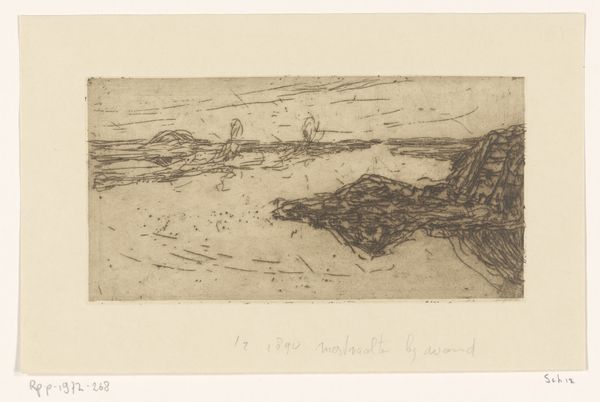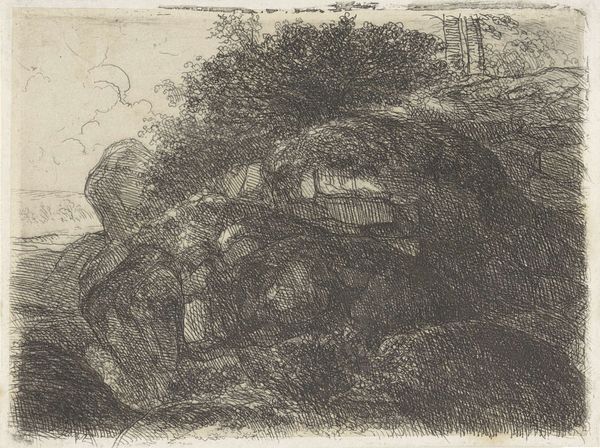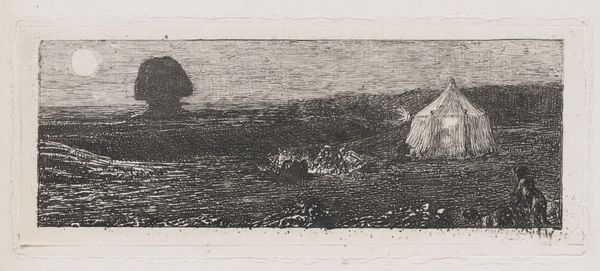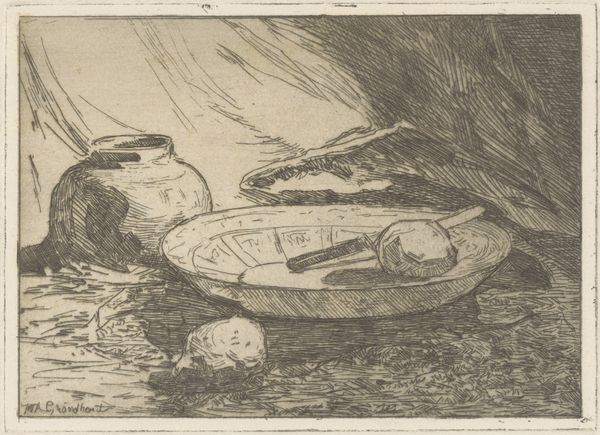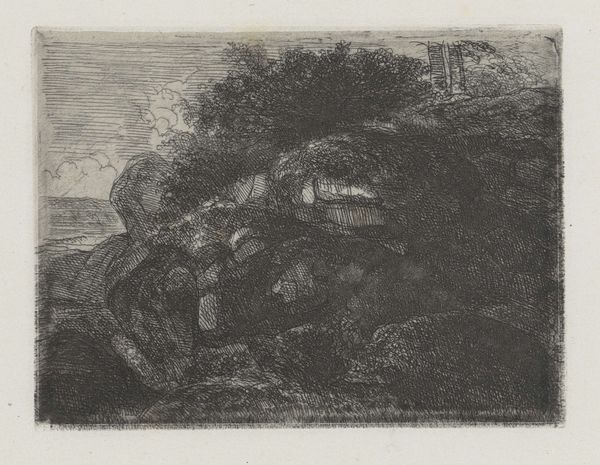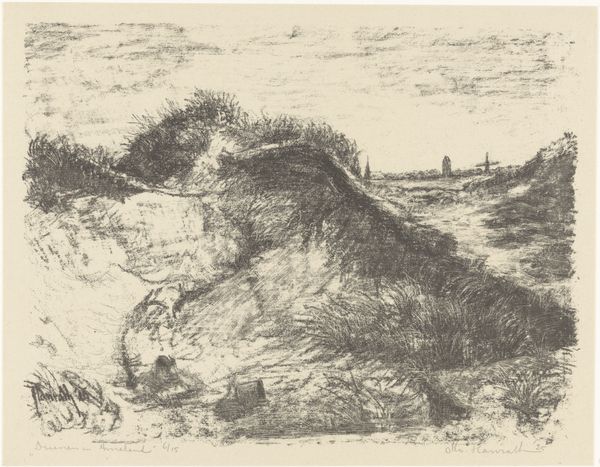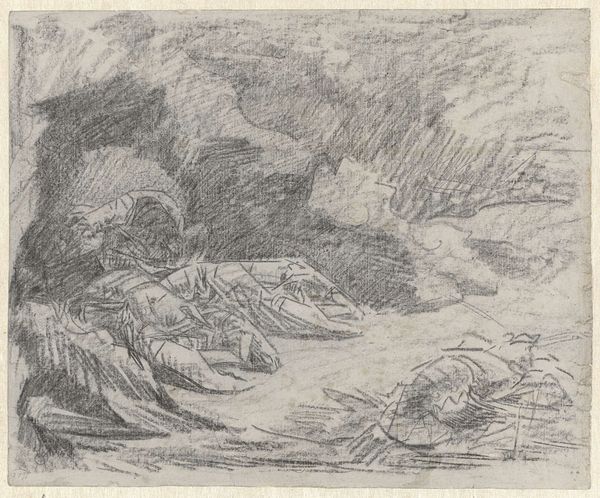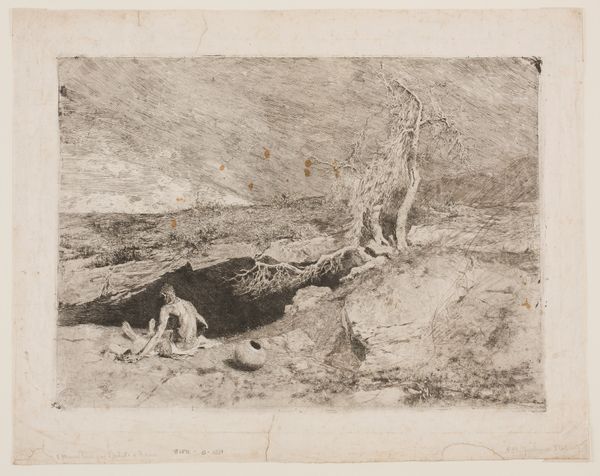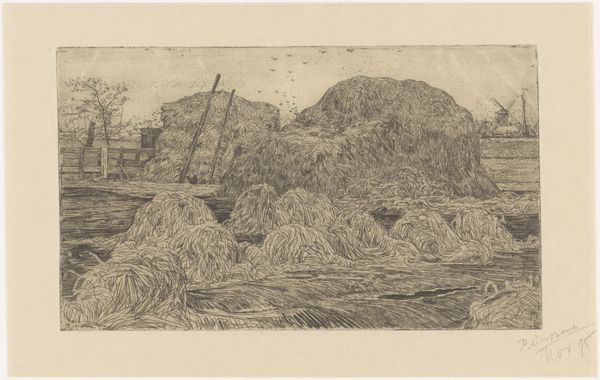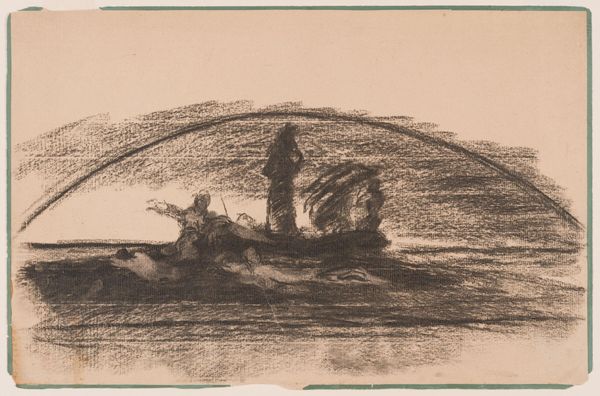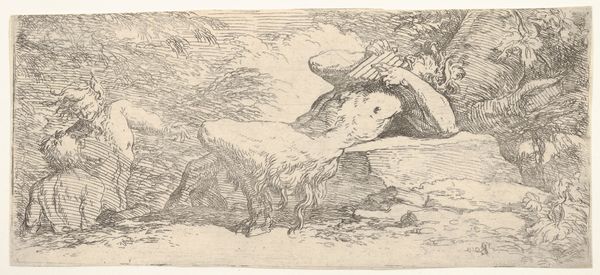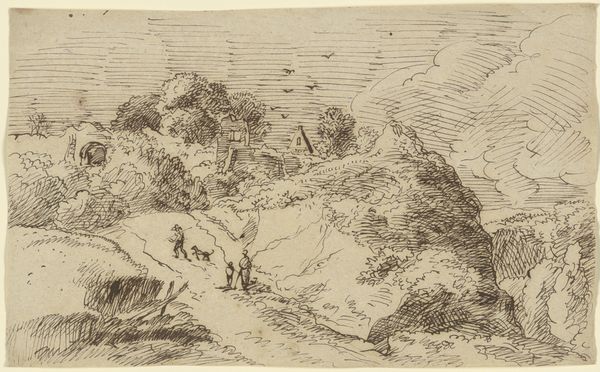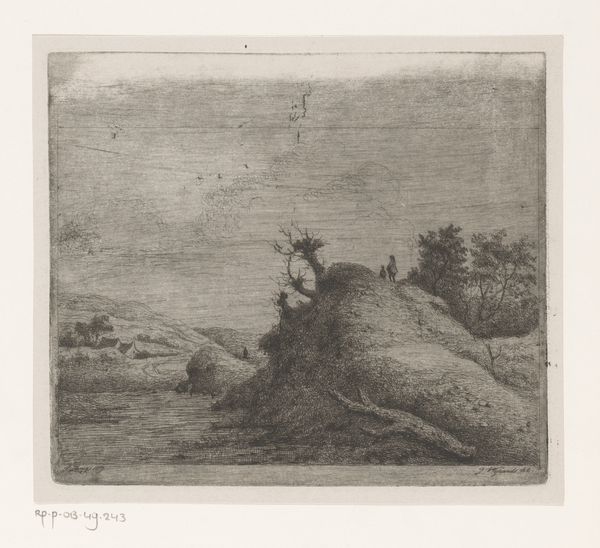
drawing, print, ink, engraving
#
drawing
# print
#
pen sketch
#
pencil sketch
#
landscape
#
ink
#
genre-painting
#
engraving
Dimensions: 86 mm (height) x 129 mm (width) (bladmaal)
Curator: Jürgen Ovens created this drawing and print hybrid, titled "En hval strandet ved Eiderstedt," around 1659-1660. Editor: My initial impression is melancholic, almost dreamlike. The beached whale dominates the composition, doesn't it? Like a dark cloud fallen onto the sand. Curator: It does. The cross-hatching used to render the whale's immense form also communicates decay and the texture of blubber and skin. Note how that same application is found throughout the land and skyscape, further enhancing the whale's dominance in the physical space, perhaps as commentary. Editor: The human figures perched on the whale's back, poking it, and gesturing seem insignificant against the sheer scale of the creature. The print captures the relationship between humans and the natural world, our almost parasitic relationship to the beast after it has passed. You also get a sense of the sheer manual labor involved in even approaching, then processing such an enormous body. I find it quite striking. Curator: Yes, and the use of engraving and etching-- labour-intensive processes themselves-- to document what must have been a remarkable event adds a layer of complexity to the artwork's historical value. It's part natural history illustration and something more like a personal memento mori to me. Editor: And think about the material the whale offered—oil, bone, baleen! It wasn't just about looking at something monumental. Whale products were integral to 17th-century economies. It’s an eerie precursor to our own, often destructive, material dependencies, laid bare, so to speak, in monochrome ink. Curator: Exactly. The composition itself creates a kind of seesaw of ideas--wonder and lament, documentation and dirge. In many ways, it also documents the shift towards natural sciences as the artist takes careful measures to capture all available facets of the environment that resulted in such an event. Editor: Ultimately, this small work feels so contemporary in its meditations on ecology and labour. Curator: Yes, it's amazing how something so steeped in its own time can still speak to us so urgently.
Comments
No comments
Be the first to comment and join the conversation on the ultimate creative platform.
